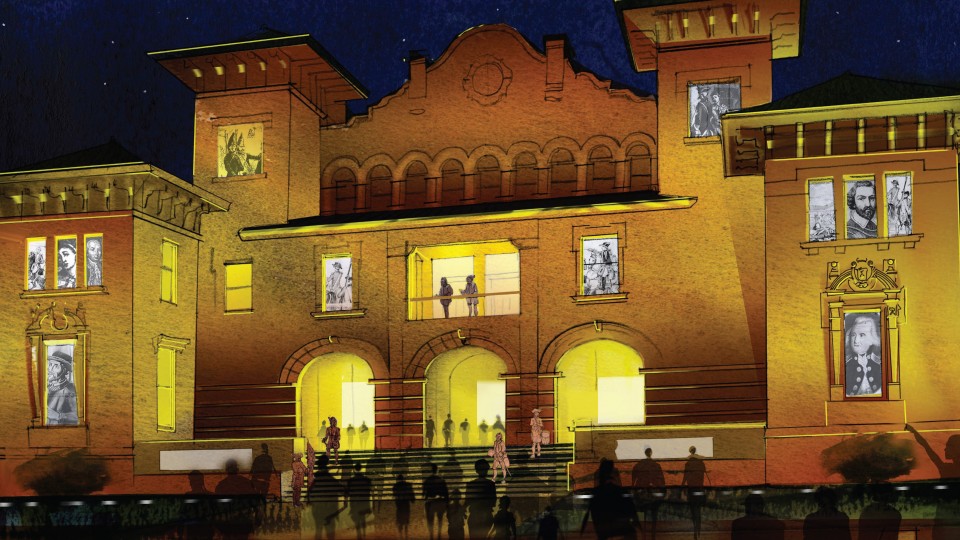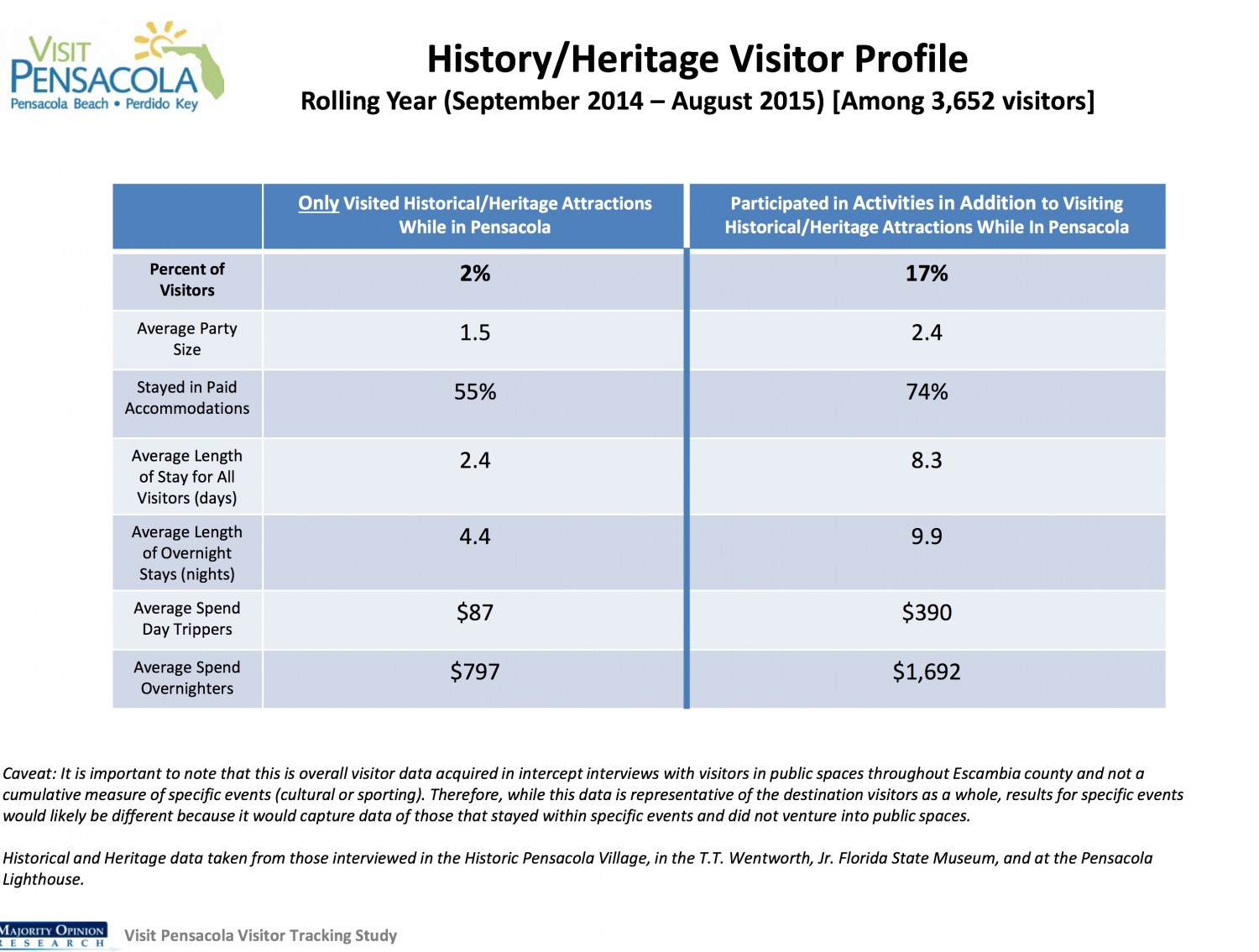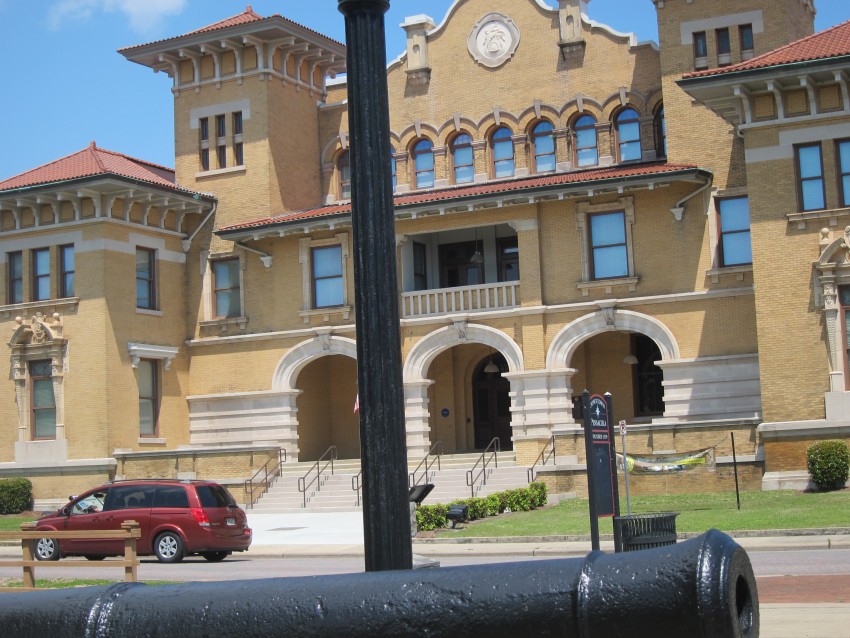Making what's old, new again
- October 21, 2015
- / Carlton Proctor
- / economy

The University of West Florida Historic Trust Tuesday unveiled a sweeping master plan for its 8.5 acre Historic Pensacola district, and wasted no time getting the first phase under way.
Work crews will begin today laying the groundwork for installation of a $100,000 permanent canopy to shade remains of the foundation to the commanding officers quarters built by British soldiers during the late 1700s.
That work is part of the overall, $10 million plan to revamp the university's holdings in the district. The investment will support the growing cultural heritage tourism market, which draws visitors to sites and locations that celebrate history and culture, something Pensacola is rich in.
The tourism market is a critical piece of the Pensacola metro area's economy, so much so that a measure of its impact — bed tax collections — is included in the Studer Community Institute's metro dashboard.
The dashboard, created in collaboration with UWF, is a set of 16 metrics that give an at-a-glance look at the economic, educational and social well-being of our community.
UWF President Judy Bense said the master plan, developed by the British firm Haley Sharpe Design, is designed to "draw more people here to explore and enjoy the history and the archaeology that lies here in downtown Pensacola.
"What you're going to see with this plan is a breakthrough for the Historic Trust to the next level," Bense said.
Historic Trust Chairman Jerry Maygarden reminded the audience of Pensacola's long and rich history, while adding, "that history continues to unfold before our eyes.
"Our mission, from this time forward, is to have Pensacola compared to other historic cities such as Charleston, Savannah and Gettysburg," he said.
Maygarden said that a major goal of the master plan, in addition to attracting more visitors, is to engage local citizens about Pensacola's history and its ongoing archaeological explorations.
Improving access, appeal
UWF Vice President Brendan Kelly, who heads the Historic Trust, told an audience of more than 100 gathered in the Museum of Commerce that when fully implemented the project will:
— Improve nighttime exterior lighting of the T.T. Wentworth Museum by placing holographic images framed by the museum's windows facing Plaza Ferdinand. The museum also will be open to the public in the evenings.
— Making major pedestrian walkway improvements to Zarragossa Street to improve access to Historic Pensacola Village. Improvements will include surface markings in the walkway outlining the fort ramparts, and other important sites within the fort's interior.
— Combining the assets of the Museum of Industry and moving them into the Museum of Commerce.
— The building now occupied by Museum of Industry would be turned over to the existing Pensacola Children's Museum, a move that would double its size.
"The priority of this interpretive master plan is to make good on the assets we already have," Kelly said. "We have a rich archaeological history. It's just underground in Pensacola."
The Historic Trust – encompassing the T.T. Wentworth Jr. Florida State Museum, Historic Pensacola Village, Arcadia Mill Archeological Site, Voices of Pensacola Multicultural Center and Pensacola Children’s Museum – has operated under the umbrella of UWF since 2001 and is a part of the Division of University Advancement.
The Historic Trust originally was formed by the governor and managed by the Department of State. Coming to UWF brought new resources, additional programs and tours, and renovations for its 28 properties.
“We are now positioned to do things more professionally than ever before,” said Robert Overton Jr., executive director of the UWF Historic Trust in a news release. “What we were really lacking was a cohesive vision for how to take this site to the next level. This is a playbook by which we can wrap our arms around our entire history and share it.”
Visit Pensacola, the area's tourism promotion entity, has tracked some information about "heritage visitors" to the area. Here's what they found.

Visit Pensacola's data about historical and heritage visitors' impact on the market. Source: Visit Pensacola.
Seeking community support
The estimated cost of the entire master plan is some $10 million, and Kelly appealed to the audience, which included Mayor Ashton Hayward and several other public officials, for financial help.
"We don't have all the money for these priorities, but the community does," Kelly said. "We will invite the public to help us pay for these improvements, not to add buildings but to tie us all together.
Kelly said the UWF Historic Trust is funding the $100,000 cost of the canopy.
The remaining projects, including streetscape improvements, will require broad fundraising efforts by the Historic Trust, along with the community's private and public sectors.
"We didn't ask for a $300 million plan," Kelly said, noting the next step in the master plan's timetable will be raising funds for the projects which can be done in phases.
"We hope this plan gets you excited," Kelly said. "Excited about what comes next for downtown Pensacola and the Historic Trust."

 CivicCon launches with a look at good growth in cities
CivicCon launches with a look at good growth in cities
 Building stronger brains one baby, one parent at a time
Building stronger brains one baby, one parent at a time
 SCI debuts commercial on Early Learning City
SCI debuts commercial on Early Learning City
 Entrecon: World class speakers and an opportunity to sharpen skills
Entrecon: World class speakers and an opportunity to sharpen skills
 PYP Quality of Life survey 2017
PYP Quality of Life survey 2017
 EntreCon Pensacola 2016: A look back
EntreCon Pensacola 2016: A look back
 Leadership tip: getting better employee takeaways
Leadership tip: getting better employee takeaways
 Leadership tip: be interested instead of interesting
Leadership tip: be interested instead of interesting
 Leadership tip: delivering difficult messages
Leadership tip: delivering difficult messages
 Brain Bags boost Arc, Early Childhood Court programs
Brain Bags boost Arc, Early Childhood Court programs